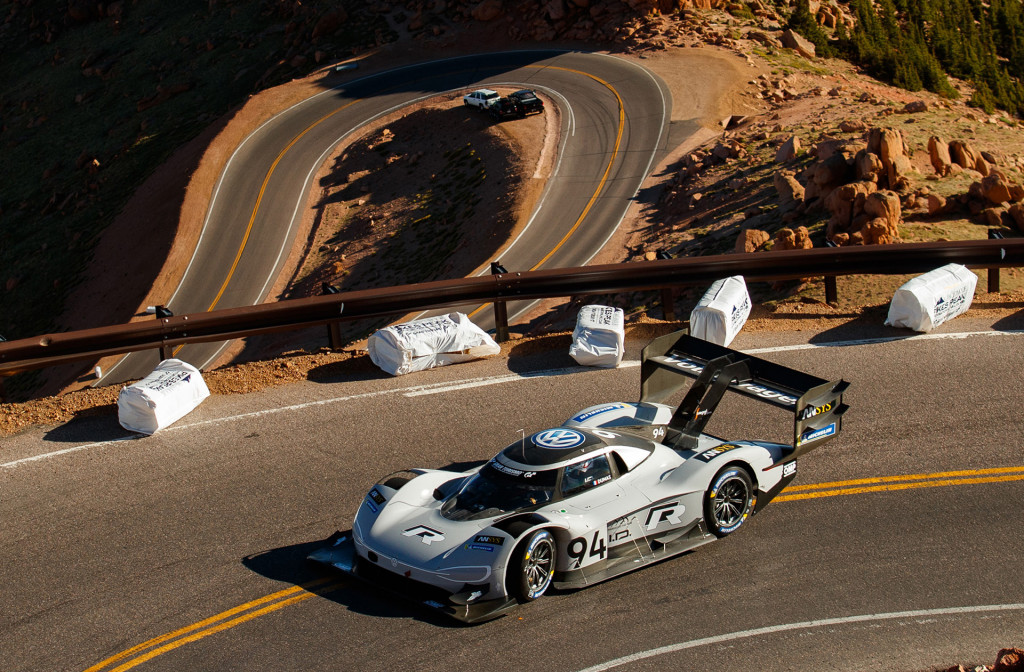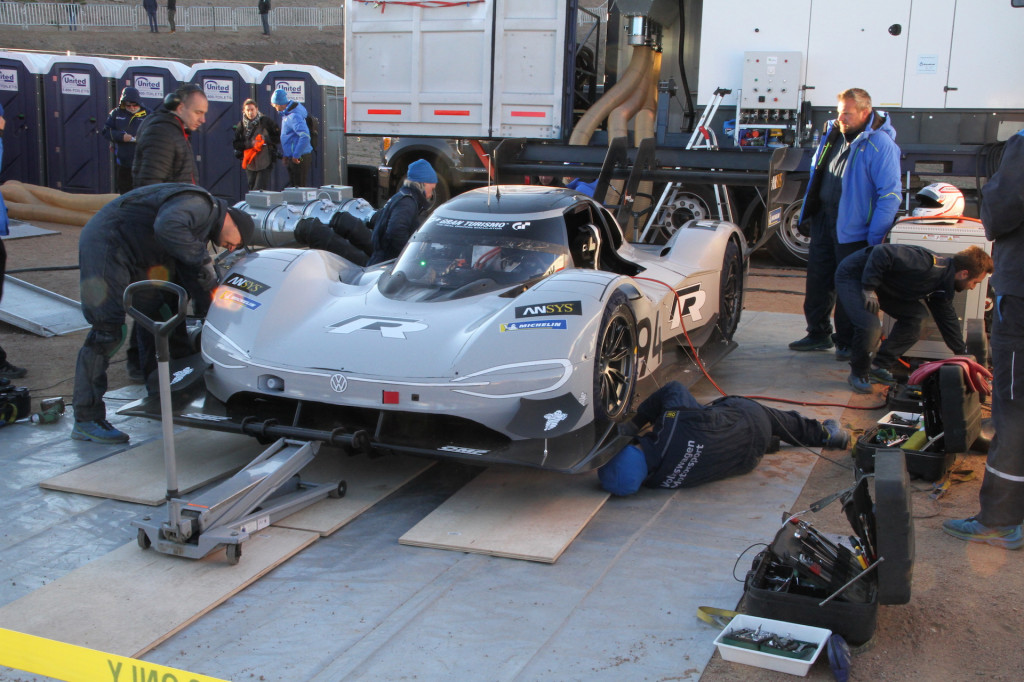Volkswagen's Pikes Peak hillclimb race car, called the ID R, obliterated the Pikes Peak International Hillclimb's Unlimited class record Sunday by 16 seconds. Its Le Mans-prototype looks, complete with overgrown rear wing, were nearly as wild as its overall time up the paved mountain road: 7 minutes, 57.158 seconds.
But why should you care? After all, how does a hyper-exotic prototype relate to anything you might drive on the road, even in the future?

Romain Dumas drives the Volkswagen ID R at 2018 Pikes Peak International Hill Climb
Although the battery produces power levels that might seem bonkers for a production car, the research done that brought about such extreme power levels in the ID R will inform the development your future electric car.
VW has a tremendous business reason for fielding the ID R at Pikes Peak: The VW Group will spend $84 billion of its R&D budget through 2022 on electric propulsion for production cars, including batteries, according to Reuters.
VW has already confirmed it will offer pure electrics in an ID car family by 2020.
READ THIS: Volkswagen ID electric car production date now set: November 2019
Pikes Peak is unique in motorsports in that the elevation change from 9,390 to 14,110 feet altitude from start to finish places a huge advantage on electric propulsion over combustion engines that run out of breath at increasing altitudes.
"For an engineer," says Willy Rampf, VW's special technical consultant on the project, "this is a paradise. The rules here are wide open on electric powertrains. Combustion engines see about a 40 percent air density loss over the length of this race, which takes power away. That places electric power at a big advantage. We've even developed our own rapid charging system for this very specialized battery that's entirely proprietary. "
The highly specialized battery in the VW ID R Pikes Peak is built around a two-segment, 3,500-cell, variable-voltage battery that delivers maximum power in short duration rather than merely acceptable power over a longer duration, as in an electric road car; power density, rather than energy density is they key.

Volkswagen ID R Pikes Peak racer, Jim Resnick photo
With costs coming down for batteries with high energy density, VW is beginning to look at increasing power levels for electric cars, as Tesla and other automakers have.
The ID R battery powers two motors, one at the front axle and one in the rear, totaling 680 horsepower and 479 pound-feet of torque.
The car's acceleration looks simply rocket-like. The electric motor driving the rear wheels is a development of the motor that will power VW’s next generation Formula E racer.

Volkswagen ID R Pikes Peak racer, Jim Resnick photo
We asked engineers why they opted for two motors rather than four in-wheel motors. Greater weight is a concern, but we suspect there wasn't time in this project's accelerated development schedule.
Pikes Peak also makes special demands on an electric car’s charging system. In the case of a red flag or any other interruption in the racing session, the car must be able to fully recharge in 20 minutes or less.
To meet these demands, VW engineered a rapid recharging system using two huge off-board chargers. Two chargers build up less heat in the battery than a single charger, which could be a problem with such a quick charge. The generators used to supply power for charging on the mountain were fueled by glycerol to reduce emissions.
DON'T MISS: 11 things you need to know about Formula E electric-car racing
VW began the project just nine months ago, in October 2017.
Since then, "we also trained the mechanics to be very careful when working on the car," notes Rampf. "Getting shocked by this car when working on it's electronics would not end well."
Unlike the weekend, which rewrote the record book.












